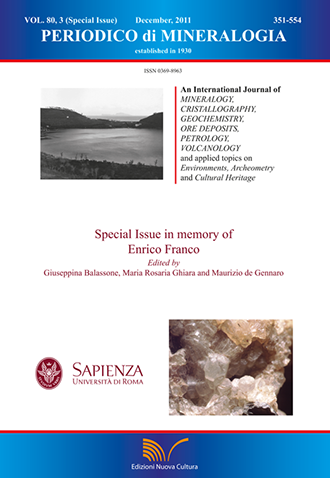Potential of vis-NIR reflectance spectroscopy for the mineralogical characterization of synthetic gleys: a preliminary investigation
DOI:
https://doi.org/10.2451/2011PM0029Keywords:
vis-NIR spectroscopy, X-Ray Powder Diffraction, soil gley, iron oxides, synthetic gleysAbstract
An investigation was carried out aiming at assessing the potential of vis-NIR reflectance spectroscopy, through comparison with the conventional X-ray powder diffraction (XRPD) technique, for the characterization of synthetic gleys, obtained in laboratory starting from Fe0 and Fe2+ under different conditions of initial pH (5.5, 7.0 and 8.5). XRPD analysis showed that in any case goethite formed, whereas magnetite and lepidocrocite developed in the less oxidised, and akaganéite and hematite in the more oxidised environments. Magnetite was found only starting from Fe0, i.e. in the less oxidative condition, whereas sporadic hematite was detected just in Fe2+ synthetic gleys at 8.5 pH. Vis-NIR reflectance spectroscopy fully confirmed XRPD results. The features of reflectance spectra allowed (i) to discriminate Fe2+ from Fe0 synthetic gleys; (ii) to detect goethite and akaganéite in the high-reflectance spectra of Fe2+ synthetic gleys; (iii) to correlate the very poor reflectance of Fe0 synthetic gley spectra to magnetite; and, (iv) to identify some goethite and lepidocrocite features in Fe0 synthetic gleys spectra. The analysis of second-derivative spectra also addressed to goethite, lepidocrocite and magnetite in Fe0 synthetic gleys; and (ii) goethite, akaganéite and - at pH 8.5 - hematite in Fe2+ synthetic gleys. The results obtained appear to be as original as significant, introducing vis-NIR reflectance spectroscopy as an innovative and promising effective method for the characterization of the soil gley forms, and highly stimulating for further investigations.


